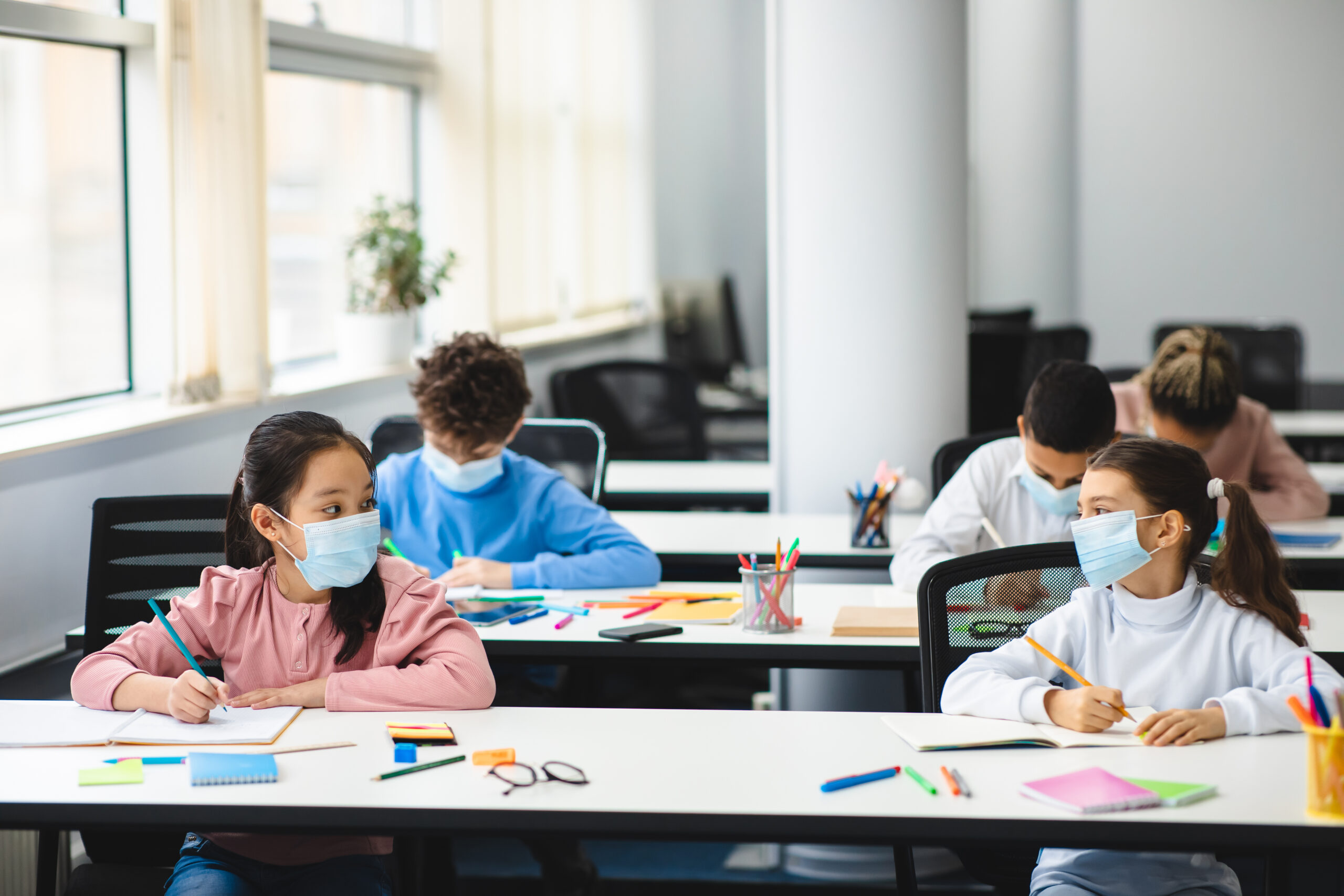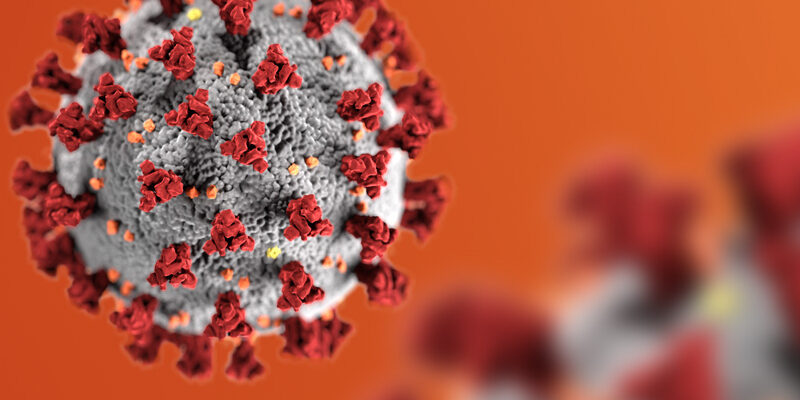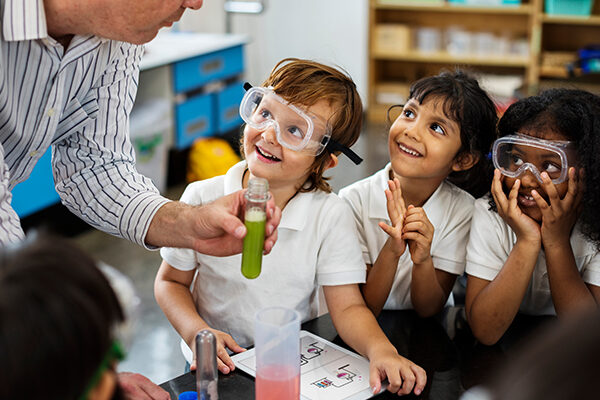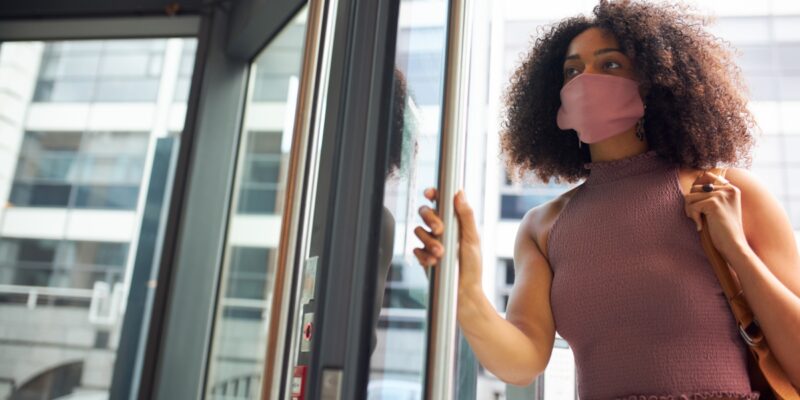Guidelines for Reopening Schools
According to the CDC, vaccination is the leading public health prevention strategy to help end the COVID-19 pandemic2. CDC recommends everyone 12 years and older get a COVID-19 vaccine to help protect themselves and others against the virus, and offers guidance on where to find a vaccine and how to prepare your child for vaccination.4.
CDC also recommends that schools communicate, educate and reinforce age-appropriate strategies to help stop the spread of COVID-19, including disinfecting frequently touched surfaces, washing hands, wearing cloth face masks and practicing physical distancing.2
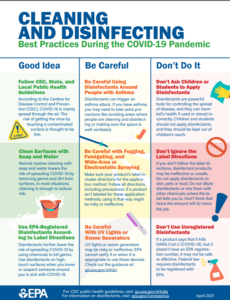 Clean and Disinfect Surfaces
Clean and Disinfect Surfaces
CDC recommends cleaning and disinfecting high-touch surfaces such as desks, doorknobs, handrails, sinks, tables and chairs frequently. However, disinfection products should not be applied by children or when they are nearby, and the CDC cautions that anyone using disinfectants should be properly trained in their use and wear appropriate personal protective equipment.5
Schools can look to CDC for guidance on safely cleaning and disinfecting classrooms and other areas used by students, teachers and staff5 and the U.S. Environmental Protection Agency (EPA) has a list of antimicrobial products for use against COVID-196.
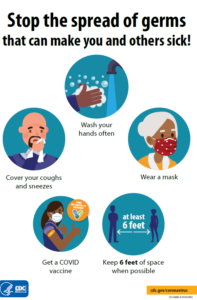
Wash Hands Frequently and Use Hand Sanitizers
Students, teachers and staff can help stop the spread of viruses and germs by washing their hands frequently.7 Hand sanitizers containing at least 60 percent alcohol can be used when soap and water are not available.
Increase Ventilation
Increasing air flow can help lower the concentration of indoor air pollutants and contaminants—including viruses.8 Bringing in as much outdoor air as possible, using child-safe fans to increase the effectiveness of open classroom windows and using air conditioning can help increase air flow in a room9, and air filters can also help reduce contaminants and viruses in the air.10 When possible, teachers and students may want to hold classes and have lunch outdoors where the air circulates more freely. Outdoor spaces, which naturally have more ventilation, may be used for meals and instruction when feasible.11
Wear Masks
Wear cloth face masks to help limit the spread of COVID-19.12 Face masks can provide a barrier when someone talks, coughs or sneezes, helping to keep respiratory droplets from traveling into the air or onto others. Due to the Delta variant, CDC has updated their guidance and recommends universal indoor masking for all teachers, staff, students, and visitors to K-12 schools, regardless of vaccination status.2.
Keep Immunizations Up-to-Date
According to the CDC, widespread vaccination is a critical tool to help stop the pandemic, and they recommend everyone 12 years and older get a COVID-19 vaccine to help protect themselves against COVID-19. CDC also offers guidance on where to find a vaccine and how to prepare your child for vaccination.4
Students should be up-to-date on their immunizations to help prevent illnesses and hospitalizations.13 Vaccines, such as the flu shot, have been shown to be safe after being carefully tested by scientists, doctors and healthcare professionals.
Practice Physical Distancing
Keep desks at least three feet apart, and give students extra space to spread out for exercising during recess, in gym class and when playing sports. Schools may wish to limit or cancel activities, such as sports, where physical distancing is not feasible. Consider converting underutilized school and community spaces to increase classroom space.14
Proactively Plan for Outbreaks
CDC advises schools to develop proactive plans for when a student or staff member tests positive for COVID-19. They also advise educating parents and caregivers on how to monitor children for COVID-19 symptoms at home.2
Other Tips and Considerations
- When possible, leave classroom doors open to reduce the need to touch doorknobs.
- To help limit student interactions outside the classroom, have teachers move between classrooms instead of students, mark hallways and stairs with one-way arrows, and offer fewer classes in shorter time periods during the school day.14
- CDC recommends people who are not fully vaccinated maintain physical distance of at least 6 feet from others who are not in their household.15
- CDC recommends screening testing be offered to students who have not been fully vaccinated when there are higher levels of COVID-19 cases in the community. Testing screening can also offer added protection for schools that are not able to provide optimal physical distance between students.2
- Assign seats on buses and consider limiting playground use to small groups.14
For more guidance about operating schools during COVID-19, visit:
Sources
- Centers for Disease Control and Prevention (CDC): https://covid.cdc.gov/covid-data-tracker/#datatracker-home
- CDC: https://www.cdc.gov/coronavirus/2019-ncov/community/schools-childcare/k-12-guidance.html
- American Academy of Pediatrics: https://services.aap.org/en/pages/2019-novel-coronavirus-covid-19-infections/clinical-guidance/covid-19-planning-considerations-return-to-in-person-education-in-schools/
- CDC: https://www.cdc.gov/coronavirus/2019-ncov/vaccines/recommendations/adolescents.html
- CDC: https://www.cdc.gov/coronavirus/2019-ncov/community/disinfecting-building-facility.html?CDC_AA_refVal=https%3A%2F%2Fwww.cdc.gov%2Fcoronavirus%2F2019-ncov%2Fcommunity%2Freopen-guidance.html
- Environmental Protection Agency (EPA): https://www.epa.gov/coronavirus/about-list-n-disinfectants-coronavirus-covid-19-0
- org: https://www.healthychildren.org/English/health-issues/conditions/prevention/Pages/Hand-Washing-A-Powerful-Antidote-to-Illness.aspx
- EPA: https://www.epa.gov/coronavirus/ventilation-and-coronavirus-covid-19
- CDC: https://www.cdc.gov/coronavirus/2019-ncov/community/schools-childcare/ventilation.html
- EPA: https://www.epa.gov/coronavirus/air-cleaners-hvac-filters-and-coronavirus-covid-19
- CDC: https://www.cdc.gov/coronavirus/2019-ncov/global-covid-19/schools.html
- CDC: https://www.cdc.gov/coronavirus/2019-ncov/community/schools-childcare/k-12-guidance.html#mask-use
- S. Department of Health and Human Services: https://www.hhs.gov/immunization/get-vaccinated/index.html
- Healthychildren.org: https://www.healthychildren.org/English/health-issues/conditions/COVID-19/Pages/Return-to-School-During-COVID-19.aspx
- Healthychildren.org: https://www.healthychildren.org/English/health-issues/conditions/COVID-19/Pages/Social-Distancing-Why-Keeping-Your-Distance-Helps-Keep-Others-Safe.aspx

